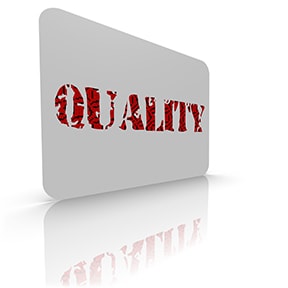
How to Secure a Successful Implementation of Your SAP Software – The First 3 Principles of Quality
In our last two blog posts in the “How to Secure a Successful Implementation of Your SAP Software” series, we discussed why quality is important in the early stages and how collaboration can enable you to measure the success of your efforts. These two factors contribute to a seamless implementation of your SAP software, but achieving extraordinary business transformation isn’t just a matter of luck. Doing so requires careful planning and a commitment to 10 principles of quality. These 10 principles enable your organization to not only establish predictability in your project, but transparency as well; regardless if you are implementing an on-premise or cloud solution.
The following are the first three Principles of Quality:
- Anchor Business Value Firmly in Your Project – Think about how many design and implementation decisions are made throughout the lifespan of a project. With so many options and decisions, it’s important that you make appropriate and effective decisions at every stage of the project. All parties involved must clearly understand the project’s strategic importance, its business objectives, and its key success criteria. It is crucial that you not only track these aspects throughout the project, but after going live as well, making sure the solution continues to meet the business requirements. In doing so, you can justify whether or not the changes proposed to the project scope are justified by the business value they may add
- Determine Clear Requirements Early On – In order to implement a feasible, affordable, maintainable environment that delivers adequately, technical requirements must be met. To do this effectively, the application landscape and system architecture must be aligned with your business strategy. Requirements regarding master data flow, integration, security, interfaces, and environment can be analyzed early on to allow for sufficient time to plan the related efforts. By involving business users early on with the collecting process and functional requirements, you can help ensure buy-in to the completed solution.
- Cooperate with Stakeholders and Use a Proper Governance Model – Project team members and stakeholders must thoroughly understand the project’s scope and focus on achieving your business objectives and operational drivers. By utilizing a project charter from the beginning of the project, you can align stakeholders and facilitate the onboarding of the initial team as well as resources added later on. Roles and responsibilities must also be defined in the initial phase so everyone involved understands the team structure, lines of communication, and who has the authority to make which decision.
Stay tuned for next week’s blog on the next three principles of quality and how they aid in a smooth project process. Contact Third Wave today to discuss more!

